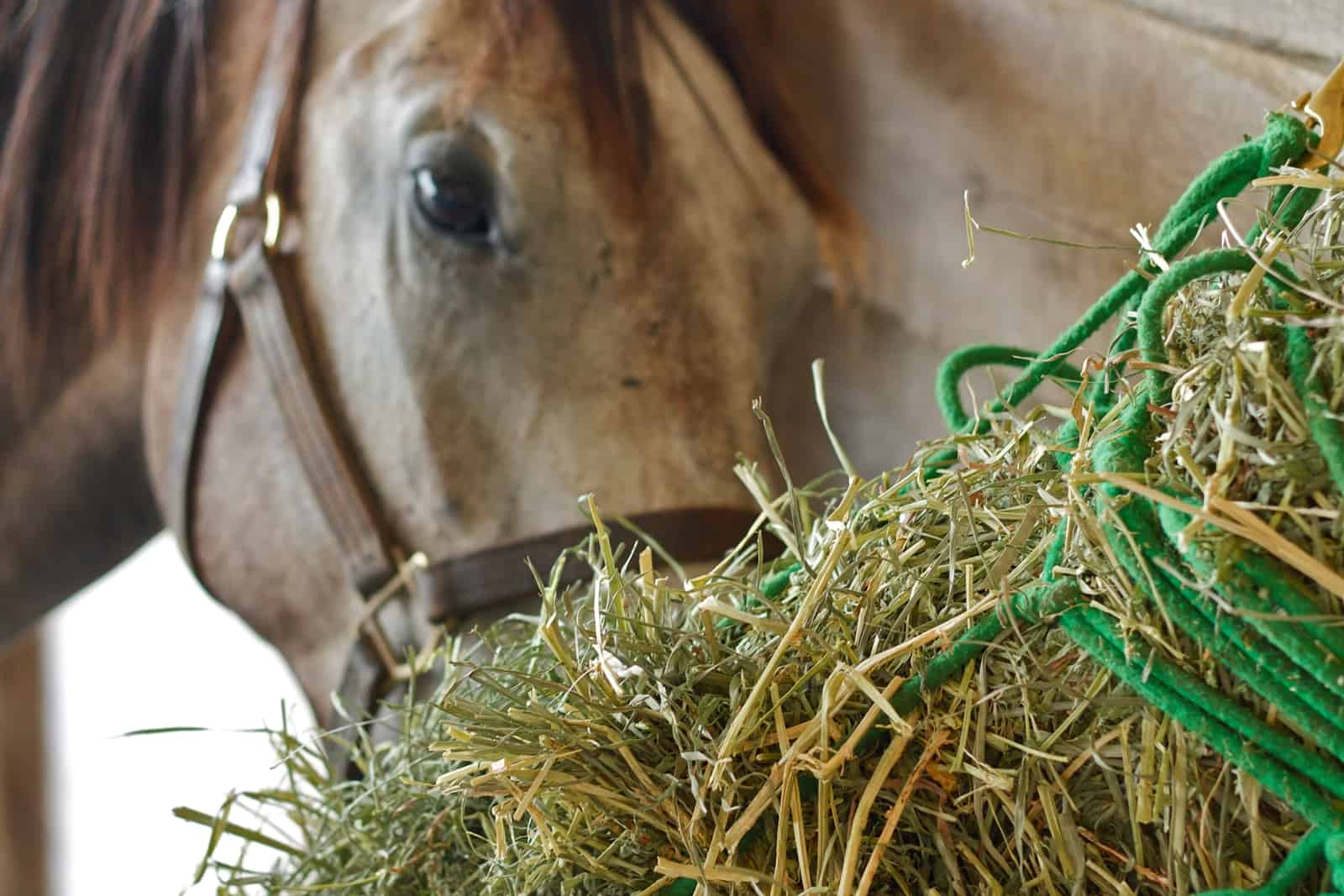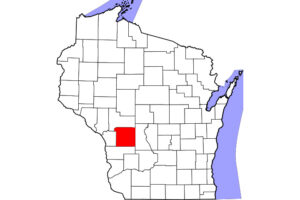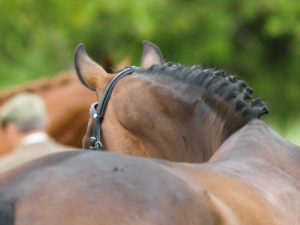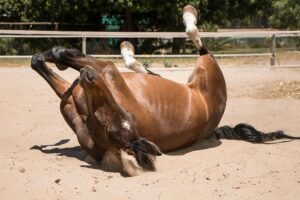Hay: To Soak or Not to Soak?
- Topics: Article, Hay, Horse Care, Metabolic Problems, Nutrition, Nutrition Basics

In areas or seasons where pasture is unavailable, horse owners turn to hay to make up for their horses’ loss of grazing time. But choosing the right hay for a particular horse can present challenges. When feeding hay to horses, many questions arise: What kind, how much, should I buy processed hay, and finally, should I soak the hay for my horse? Soaking hay provides owners with the ability to alter some physical characteristics as well as the nutrient content of their hay if purchasing the ideal hay is not a feasible option.
Why should I soak my hay?
Respirable dust and mold
Suboptimal growing and harvesting processes can result in excess dust and/or mold in hay that can cause problems in horses. For example, dust can accumulate in hay grown near dusty roads, and mold can form in hay that has been baled in wet conditions. Dust particles can cause or worsen respiratory problems such as recurrent airway obstruction (RAO). Mold can cause digestive upset such as colic and also produces airborne spores that can cause respiratory diseases in horses. Many studies have shown soaking hay can reduce respirable particle concentration by at least 88%. Soaking can also reduce the amount of mold present.
Nutrient content
Some horse owners soak their hay to reduce the amount of sugars, or nonstructural carbohydrates (NSC), in the forage. Horses that require a low-sugar diet, such as those with laminitis or insulin resistance, might benefit from soaked hay. Soaking Orchardgrass hay for an hour, for instance, can reduce NSC by approximately 40%. If the hay started out with 14% NSC, after soaking the concentration would be below the 12% recommended level for feeding horses with laminitis. In addition to removing sugars, soaking also reduces some minerals. Crude protein, calcium, phosphorus, and magnesium concentrations all decrease with soaking. However, certain horses might benefit from the loss of specific nutrients. For example, researchers at the University of California, Davis, School of Veterinary Medicine recommend that horses with hyperkalemic periodic paralysis (HYPP), a metabolic genetic disease, consume a diet containing less than 1.5% of potassium. Soaking Orchardgrass hay for an hour can reduce potassium concentrations from 2.2% to 1.3%. Soaking this hay for 12 hours can bring the potassium concentration down to 0.65%
Create a free account with TheHorse.com to view this content.
TheHorse.com is home to thousands of free articles about horse health care. In order to access some of our exclusive free content, you must be signed into TheHorse.com.
Start your free account today!
Already have an account?
and continue reading.
Written by:
University of Kentucky College of Agriculture, Food and Environment
Related Articles
Stay on top of the most recent Horse Health news with



















